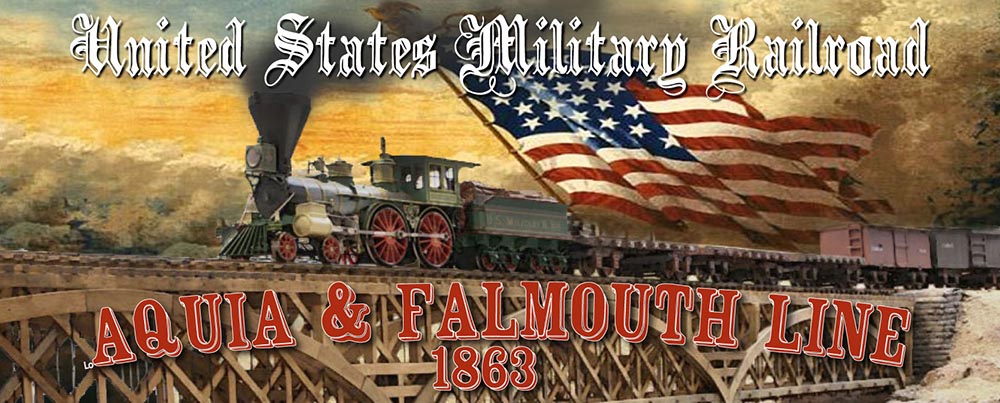Once the spackle mud dries, it will be sanded and all surfaces will get primed. The cabinet will be painted in the same color as the walls, with the trim in white. The water surface will be dark blue and the ground the Ralph Lauren textured Adirondack Bark color. Then I'll be ready to lay roadbed and track. Yeah!
It is time to begin detailed design work for the wharf. Here is a close up examination of a prototype map and some photos to give me a better idea of what was actually there.
 First is this close up of the close up of the map by Col G.H. Biddle's, 95th Reg NY Vols. for the proposed defense of Depot at Aquia Creek, showing the landing. See this link for a view of the complete map.
First is this close up of the close up of the map by Col G.H. Biddle's, 95th Reg NY Vols. for the proposed defense of Depot at Aquia Creek, showing the landing. See this link for a view of the complete map.Notice at the base of the wharf there appears to be either a wye track arrangement, or perhaps just a tail track extending to the right.
There is photographic evidence of the tail track as can be seen in the next two extreme close up photos. These two similar photos taken from the bluff behind the landing shows lots of interesting detail.
There are box cars visible in both photos on the tail track. They actually look like cars spotted for unloading since they are spaced at various gaps, though it is hard to be sure. Note on the right hand side in both photos there are moving trains, visible as blurred images, as well as stationary locomotives and cars. This implies that there are at least two tracks there to allow one train to move while others are parked.
 |
| Note the pile driver in this photo. Several of Clough's letters to Ada Anderson discuss the use and disposition of the pile driver, including the name of the tug that pulled it. |
The pile driver visible in the bottom photo received considerable attention in the letters from J.B. Clough to Ada Anderson. I have not found a close up view of the pile driver. This is a greatly enlarged view of the pile driver from the photo above. Looks like it will be fun to build.
J.B. Clough's letter to Ada Anderson on 21 April, 1863 provides some detail on driving the "protection piles" for the wharf. In this letter Clough states that piles are driven 12 feet on centers. I've attached Clough's letter at the bottom of this post if you wish to read it.
The photo below shows a close up detail on the pile construction. The piles appear to be logs and not cut timber. The flat boards on the sides of the piles are straightening beams. I can't see evidence of bolts, but they must be there. The beams on top of the piles are cut lumber. See the drawing below for a diagram from a contemporary Army manual on wharf construction, FM 5-480 that describes the terms.
 |
| This drawing from contemporary Army Manual 5-480 shows typical pile construction. The civil war era photo shows a simpler construction. |








Great stuff, Bernie. I really like the way you "dig" your way into the info you found.
ReplyDeleteVery interesting to follow!!
Grtz, Ronald.